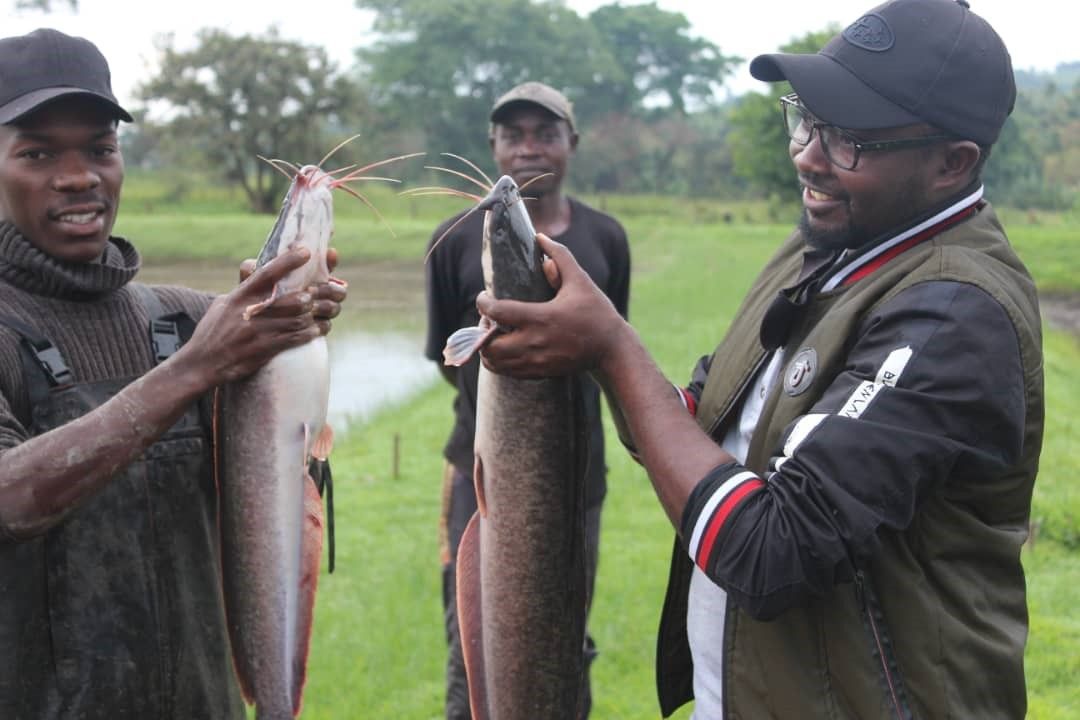Foundation fish brood stock & fry production Unit
-
Purpose
The foundation fish brood stock and fry production program, purposes to support sustainable fish genetic development, utilization, management and conservation of fish genetic resources in both fisheries, aquaculture and other related aquatic environments, with the following key focus areas;
- Establishing systems for production of founder broodstock of improved culture strains
- Conservation and development of indigenous fish genetic resources
- Monitoring of fish breeding and multiplication activities in the country
- Training fish breeders, farmers and extension staff on fish breeding and management technologies
- Reviewing of regulatory framework(s) on fish breeding
- Fostering fish breeders’ associations/societies
Fish is one of the most important commodities in Uganda and it provides employment, income and nutritional security to Ugandans. It is also a major foreign exchange earner earning approximately $127 million. Uganda currently produces about 450,000 metric tons of fish a year from capture fisheries and about 116,000 metric tons from aquaculture. Due to high increase in population and demand for fish, there has been an increased pressure on wild fish stocks which has increased the supply deficit to between 180,000 and 330,000 metric tons annually. Aquaculture has been identified as a potential sustainable solution to fish production and supply with a target of 1 million metric tons and 700,000 metric tons from capture fisheries. This requires strategic scientific efforts in both fisheries and aquaculture to improve production and productivity through genetic development and conservation towards a sustainable industry.
-
Key Stakeholders
NAGRC&DB is a major stakeholder in the fish industry working towards contributing significantly to the growth of the fisheries and aquaculture sector to achieve the national medium and long-term fisheries and aquaculture production, which will ultimately enhance sustainability of Uganda’s fisheries and aquaculture industry. The foundation fish brood stock and fry production program works together with;
- Ministry Agriculture Animal Industries and Fisheries (MAAIF): Provides policy and regulatory frameworks; Information sharing/dissemination; Coordinates planning and implementation of interventions by different agencies and departments as well as technical backstopping
- NARO-NaFIRRI: Conducts research on fisheries resources; Generates technologies across the fish value chain and disseminate information through linkages with NAGRC&DB; Provides capacity building and technical backstopping
- Local governments: Provides extension services to farmers on technologies generated and mobilizes farmers as well as assists in information dissemination; Identifies areas of intervention and follows them up with monitoring and evaluation
- Academic institutions- National and international: Provide capacity building; Research, Information analysis and packaging
- Ministry of Water and Environment: Provides Information of the legal requirements; Certification and licensing for water resource use; Water quality monitoring standards
- Ministry of Finance, Planning and Economic Development: Funds the program activities under NAGRC&DB; Monitoring and Evaluation
- Farmers: Host On-farm fish evaluations; Identify key areas of intervention; Technology uptake and adaption
-
Key Strategic interventions
- The program carries out phenotypic and genetic characterization of cultured and wild fish stocks; this establishes wild and cultured fish population structures which enhance monitoring of the trends of fish genetic resources and formulation of conservation strategies.
- There are establishments of fish breeding and production facilities on NAGRC&DB’s Animal Genetic Resources Centres. These facilities ultimately increase availability and access to superior cultured fish strains seed to farmers and are used as farmer training centres for the fish farming communities.
- There has been establishment of nucleus farmers in breeding programs as well as production of superior cultured fish strains in different regions/Agro-ecological zones in relation to their respective environmental conditions which is achieved through working with farmers and fish hatchery operators in particular regions.
- Regular training of fish breeders/farmers and extension workers for sustainable aquaculture production.
- Strengthening partnership/collaboration linkages with government ministries, departments and agencies, international institutions and organizations for capacity building, development and implementation of a number of breeding and conservation programs.
Conservation of fish genetic resources following characterization and continuous evaluation of different fish species and strains for production of founder broodstock of superior strains and species


